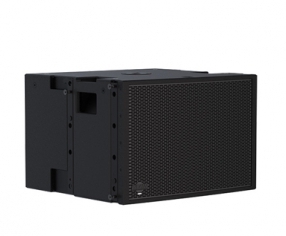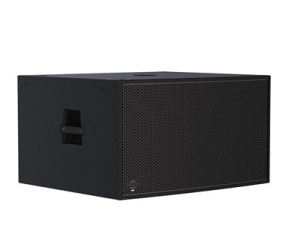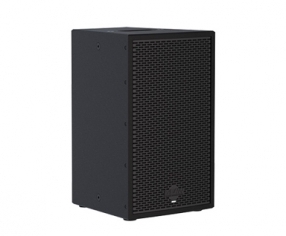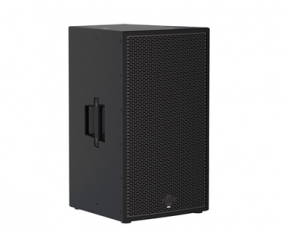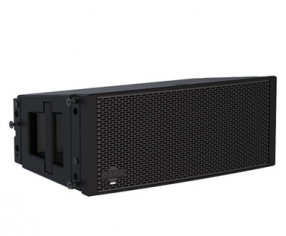The EAW RADIUS family includes (l-r) the RSX12M stage monitor; RSX208L line array; RSX126 and RSX86 two-way boxes; and RSX18 subwoofer.
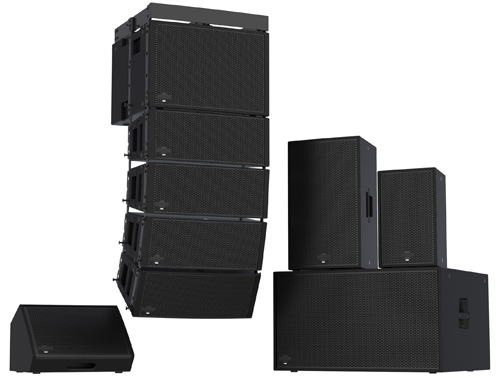
The origins of RADIUS are deeply rooted in on-the-ground market research. On the permanent installation side, we heard from consultants and contractors working in spaces such as houses of worship, auditoria, performing arts centers and live music clubs. We also sought out those working in the portable market—regional rental and corporate AV houses, even those offering dry hire (equipment rental without support crew). Our goal was to understand the struggles that users endure on a daily basis, whether with our own products or with our competitors’. We knew that EAW had the resources to drastically improve these users’ experiences, but needed to first understand what improvements were necessary.
RADIUS was born out of this research, coupled with the understanding that EAW was uniquely positioned; we had direct access to the technology necessary to address these challenges and make these users’ lives easier. However, simply adding technology was not enough without considering the interface, which also needed to be easy to use. For users with tight budgets and timeframes, more complexity is not an option. The end result is RADIUS, a system with sophisticated technology as well as an interface that is incredibly simple to use, allowing a wider audience access to these benefits.
The first aspect of creating a new family of loudspeakers was just that—it needed to be a complete family. Too often, users are forced to mix and match various series and even brands within a given event or project. This adds substantial effort to integrate the components into a complete system, whether in infrastructure or simply getting different parts of the system to sound the same. It became obvious that designing a family of loudspeaker products with a common interface and sound was essential. This drove the inclusion of point source, line source, subwoofer and monitor models, complete with a wide range of accessories. All of the models in the family were voiced by the same team, and through rigorous measurement and listening, we were able to bring their tonalities as close together as possible. Additionally, all of the models in the family have a common electronics platform, including rear-panel controls and networking. RADIUS products look, sound and work like they belong together.
The process of optimizing an array for any venue was another element of the user experience we knew needed improvement. Typically, the user must complete a number of steps before an array is ready for use—determine splay angles, EQ to correct for array size (low-frequency coupling) and apply high-frequency compensation for the distance of each array module to various parts of the audience. By incorporating tilt sensors and infrared sensors into each array module, we enable the system to detect its own configuration. Combined with a few simple pieces of information from the user—namely, nearest and farthest audience distance and array trim height—the array knows enough to compensate for the air loss as sound travels from the array to each part of the audience. We already had a solid basis for calculating angles for a given audience geometry—the algorithms within EAW Resolution software. As a final step, we provide a choice of different tonal starting points (or “Voicings”) to suit different users’ preferences without requiring them to EQ the system from scratch every time. Combining these methods, we remove the guesswork from the equation and provide users with an optimized system very close to ‘out of the box’, which saves considerable time and effort for everyone involved.
One of the continual themes we noticed in market research was the presence of extra ‘gack’ at FOH and backstage: rack gear, computers, keyboards, screens, cabling, etcetera. These exist to monitor and control all of the various devices (such as digital signal processors) connected to the system. Because all of these support devices do not speak the same language or run on the same platforms, the user must bring multiple computers, run multiple cable types and configure multiple pieces of software. EAWmosaic, by contrast, is designed to shortcut all of this. Using the intuitive app enables the user to predict, control and monitor the entire system from a single, highly portable device anywhere in the venue. Further, a single cable can be used to not only control the system but to provide multi-channel audio as well. Racks of external processors, laptops, extra screens, mice and keyboards no longer have a place backstage or at the FOH position, saving setup time, truck space and reducing complexity.
The term that we coined after RADIUS was developed was, “Smarter sound, made simple.” This perfectly encapsulates what this family does—providing a wide range of users with the benefit of a very high level of technology and sophistication, coupled with an extremely straightforward interface. RADIUS helps users of all experience levels, in a wide number of applications, to achieve excellent results with a fraction of the time and effort required for any other system. We do not expect anyone to take our word for it, however. Instead, we’d suggest connecting with us to see the system in person at one of the upcoming roadshow stops. We hope that you’ll give us the chance to prove it to you.



